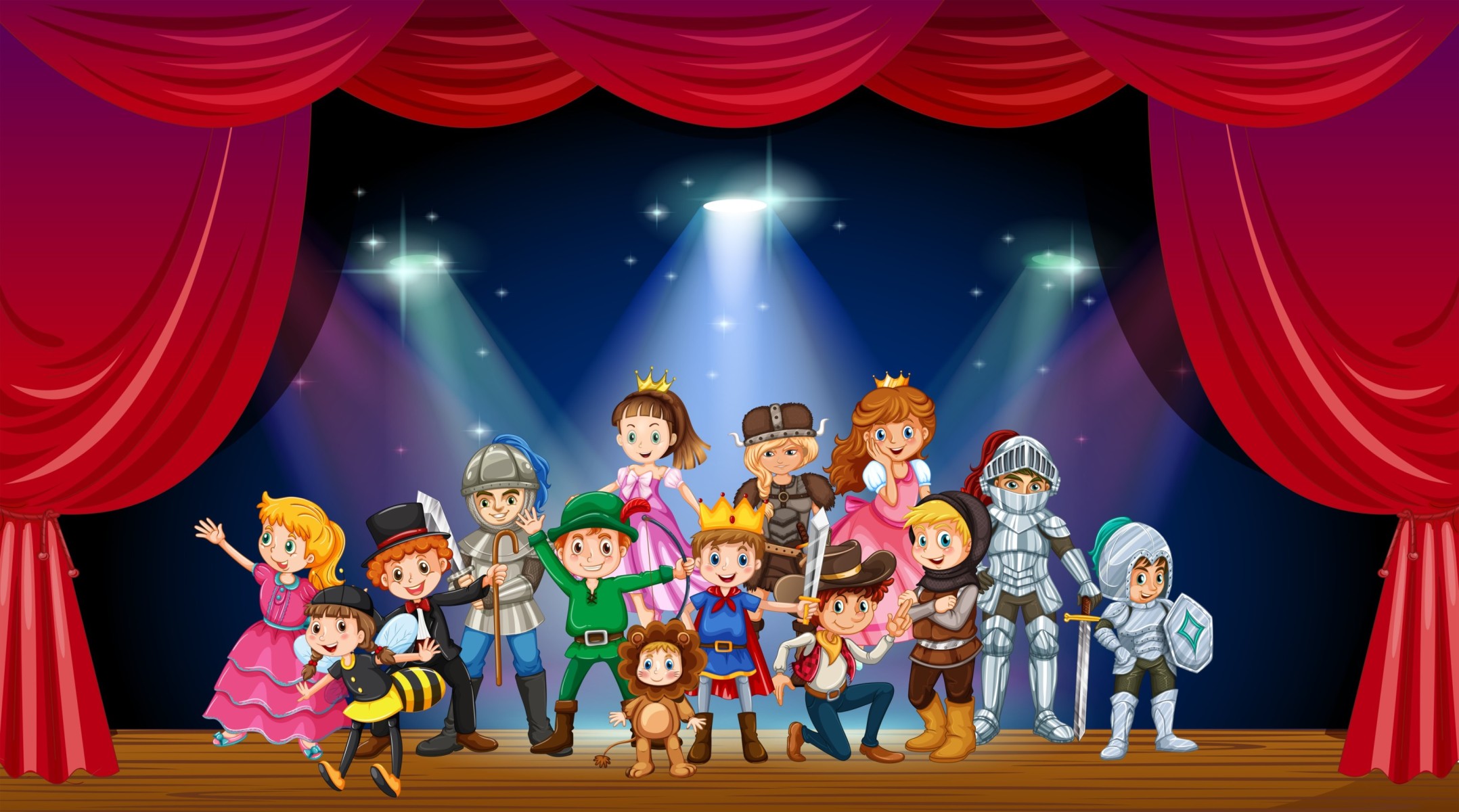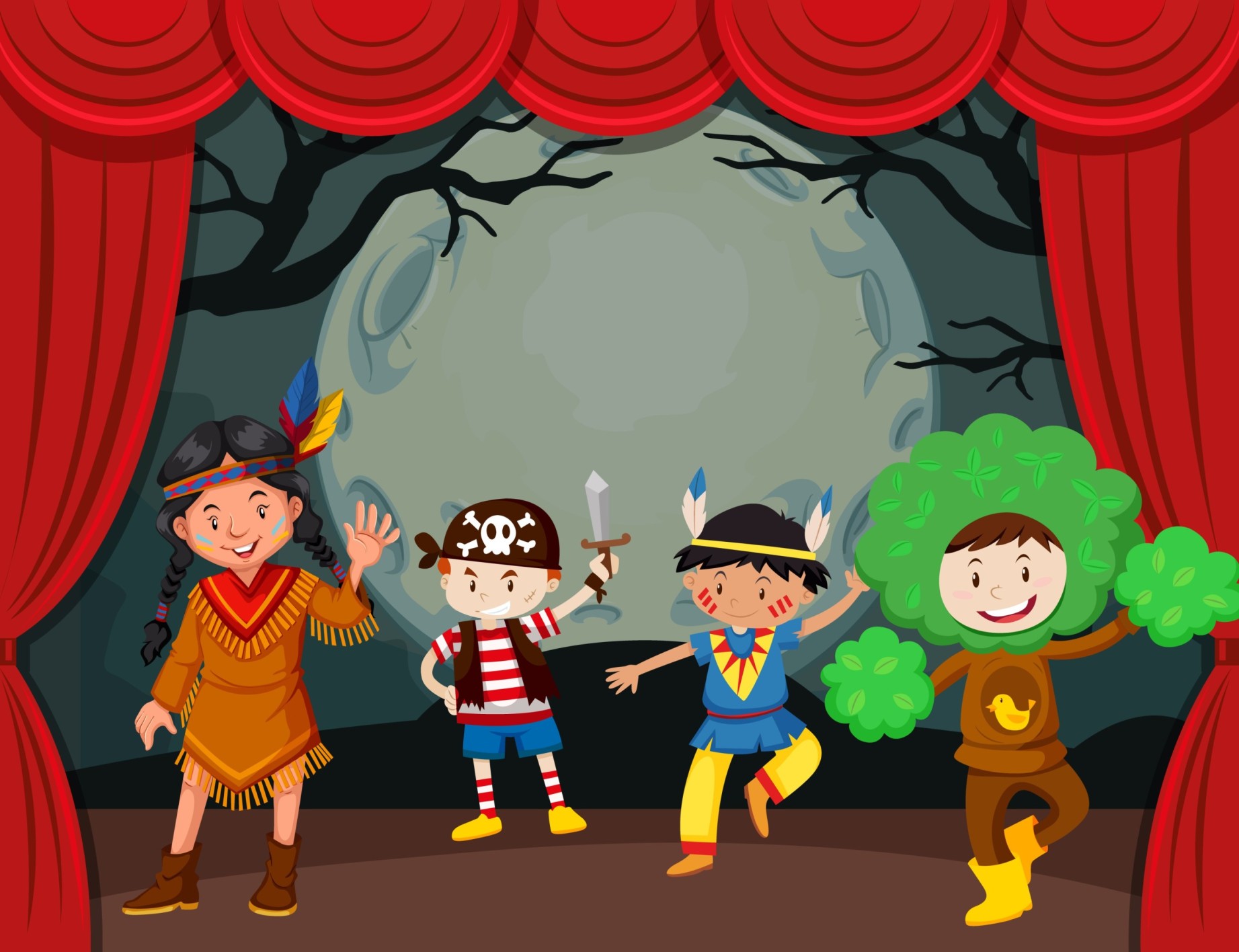How to Create a Play for 3rd Grade
Student: Read this. What if your teacher said: “We are going to create a play that this third grade class is going to perform for the entire school. The play will be about an imaginary vacation that a third grader and his/her family took. There will be speaking parts, singing parts, dancing parts and scenery. I will cast it and direct it and Mrs. Jones will direct the singers and musicians. Mr. Johnson will manage the scenery and props and Miss Black will plan for costumes. Two of you will make publicity posters.”
“Here is what I want each of you to do. Pretend you are the director in charge of creating the play. Make a list of everything and every role you can think of that is needed to create the play. For example, actors and directors.”
“When you finish your list, follow the directions below.”

Student: Do this. Look at the topics below, and place an X next to every
topic that was on your list.
_ Actors _Singers _Dancers _Scripts _Sheet Music _Choreography_ Scenery
_ Props _ Costumes _Microphones _Lights (spot, fixed, moving)
_ Playbills _Play Director _Casting Director _Music Director _Choreographer
_Scenery Manager _Props Manager _Costumes Manager
Student: Read this. Here are some more suggestions for you to think about. I hope they will be interesting to you.
Where will the vacation be? In the United States? In another country? In both places?
Will we include things that happened while we travel to where the vacation will be? Or, will we only include things that happened after we arrive at the vacation location?
Who are the characters in the play? Just the third grader? Or, the third grader and his family (parents? brothers or sisters?), or other people who they meet on their vacation?
What things happen on this vacation? Why do they happen? To whom do they happen? What do the characters think about what happened (are they happy? sad? scared?)?
To create a play, someone must write down the answers to each of these questions. What they write down becomes what is called a script, which the actors use to perform the play. If there is singing in the play, each singer needs to have pages with notes and words (called lyrics). These pages are called sheet music. Also, someone must be put in charge of the entire play – that person is the director. Someone (it may be the director) needs to decide who is going to be in what roles in the play. This task is called casting. Other people need to be in charge of getting all the props, building and decorating the scenery, and buying or borrowing or making the costumes and accessories.
Each actor has to know where he or she will be on stage (where each actor is onstage is called blocking) and what each actor is doing on stage (for example, singing, talking, standing still, dancing, running, jumping).
The movements that each actor does on stage are called choreography.
What scenery is needed to show what the vacation location looks like (palm trees, snow covered mountains, a lake, an ocean)? Will more than one piece of scenery be needed (is there more than one location that is visited on the vacation)? For example, inside a house, and/or outside a house. Will our class help by painting the scenery?
What props are needed? Here are examples of props: pieces of furniture, pictures, a rug, a soda can. Will our class be finding (maybe by asking parents) or making any of the props?
What wardrobe (costumes and accessories like jewelry) are needed? Examples: bathing suits for a beach or pool scene, or heavy coats, gloves and a knitted hat for a winter scene, or jewelry for a king or queen.

What kinds of microphones will be used to record actors speaking and/or singing? Will the microphones be on stands or will they be attached to the actors’ bodies? What equipment will be used to broadcast what is spoken or sung by the actors? Will the play include music? Does the music come from a band or orchestra that is live, or from music that is recorded? Will the music accompany performers who are singing? What kind of music will be in the play – will it be rock and roll, or folk or classical or rap?
How will we light up the actors and the stage so the audience can see them and any props that are on the stage? When do we use a spotlight? When do we use other lights to light up the stage? What colors will the lights be when they are on? Will the light beams be steady, or moving around? Will they be bright or dim? When will they fade out (slowly become dimmer until they go out) or go out suddenly (called a blackout)?
To inform the audience about who is in the play, what character they are playing, what scene they are in, in what order the scenes are being performed and also details about where and when the play takes place, we need to publish this information in a handout called a playbill. A playbill is given to each audience member when they enter the theater.
